I went up to Columbia University a few weeks ago to do some research on William F. Mangels. We are working on an exhibition in Green-Wood’s Historic Chapel, “William F. Mangels: Amusement Park King.” It was Mangels who invented many rides, including The Whip and The Tickler, and also pioneered the wave pool. He made carousels, shooting galleries, and much more. Columbia has a great collection of Mangels material; hopefully many items from there will be in the exhibition.
I knew that, on my visit to Columbia, I wanted to get a photograph of the Low Memorial Library. Here it is:
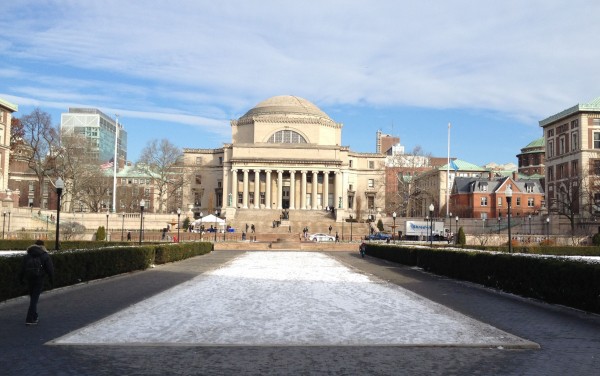
Trivia question: Who is the only person to serve as mayor of the cities of Brooklyn and New York? Answer: Seth Low. After his terms as mayor, Low moved on to Columbia University, and served as its president. He donated the $1 million for the construction of the Low Memorial Library in honor of his father, Abiel Abbot Low, who made his fortune in the China Trade.
Having gotten my photograph of the library, it was time to head inside to the research library. Little did I know the surprise that awaited me there! After filling out the necessary forms and providing the required identification, I headed into the inner sanctum–and awaited the materials from the collection. And as I waited, there it was: a wooden chair in the corner. But not just any wooden chair–a very special one. The one in which De Witt Clinton, one of New York’s greatest people, who is interred at Green-Wood.
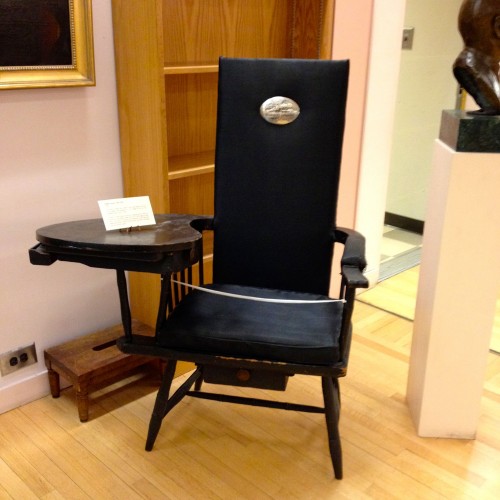
And here’s the plate on the chair:
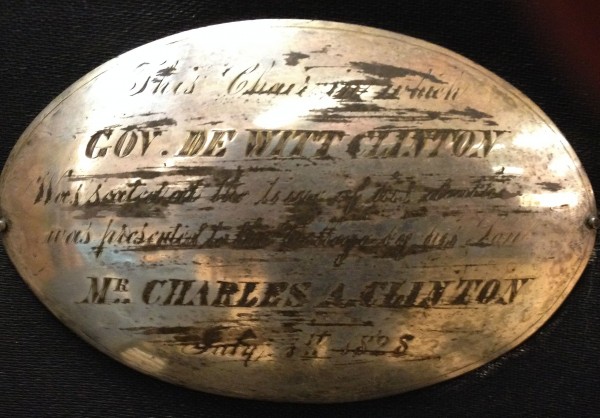
Few people have had as illustrious a career as De Witt Clinton. Clinton came from political stock; his uncle, George, served as New York State’s governor. And De Witt did very well for himself: he was the first mayor of New York City to occupy City Hall, he was the mayor who appointed the commission that laid out New York City’s street grid, he served as New York State’s governor and United States Senator from New York. But, most importantly for the development of New York City and State, Clinton became the key advocate for the Erie Canal. That ditch, only 4 feet deep but 400 miles long, connected the Great Lakes with the Hudson River, and made New York City the fulcrum in trade between Europe and America. Clinton’s advocacy on behalf of the canal was controversial; ex-President Thomas Jefferson argued at the time that government had no business getting involved in the construction of canals. Clinton disagreed; he won that argument.
But it was De Witt Clinton’s role in assuring the viability of Green-Wood Cemetery that is most important to our story. And what is remarkable about his performance in this regard is that he was dead at the time. Clinton died in 1828 and was interred in Little Britain Cemetery near Albany. Green-Wood was founded a decade later, in 1838, and burials began there in 1840. But business at Green-Wood was not good in its early years; New Yorkers were used to being buried in the small plots surrounding their house of worship (think, for example, of Trinity Church and its churchyard at Broadway and Wall Street in Manhattan). So what to make of something called a “rural cemetery” of 200 acres of so where congregants from other Christian sects would be joining you? The reaction was, by and large, pretty much “no thanks.” So what was Green-Wood to do? How would it attract prospective lot owners? Well, who was the most revered of men? That was easy: De Witt Clinton. And, for Green-Wood’s purposes, he was available: he was already dead. So Green-Wood’s trustees reached out to Charles Clinton, De Witt’s son, and get him to agree to have his father dug up and brought to Green-Wood for honored burial.
Clinton’s remains were bought to Green-Wood in the 1840s and were placed in the vault of trustee Jacob Leroy.
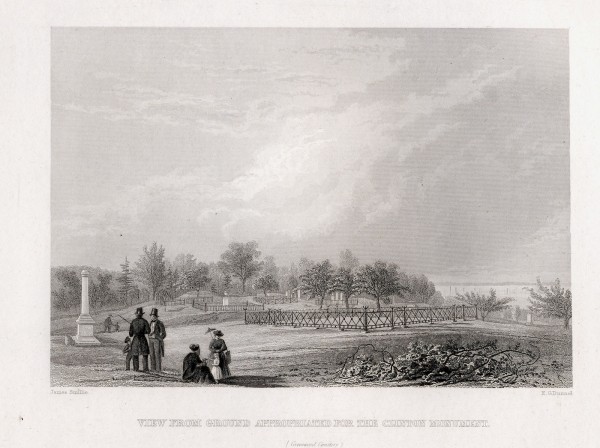
In 1853, De Witt Clinton’s remains were moved to the Clinton Lot and an heroic bronze of Clinton was unveiled above them.
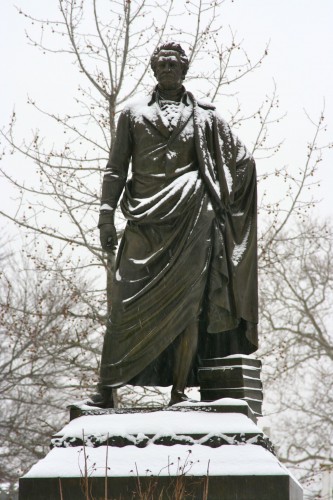

De Witt Clinton remains revered at Green-Wood. One of The Green-Wood Historic Fund’s most important paintings is of Clinton:
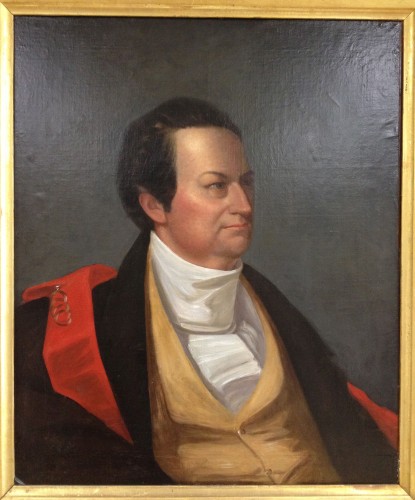
The above painting is what we call a “two-fer”–a portriat of a Green-Wood permanent resident (Clinton) by a painter who also is interred at Green-Wood (George Catlin).
One more thing: The Green-Wood Historic Fund presents an award at it annual benefit; it is the De Witt Clinton Award for Excellence. Excellent!